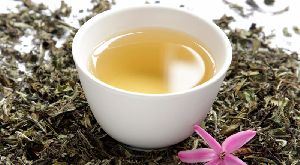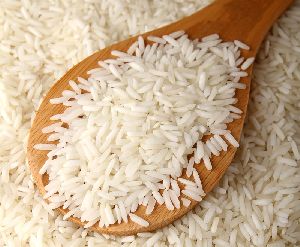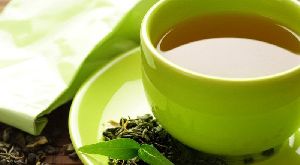
White Tea
White tea leaves, plucked only a few days in a year, are harvested at a younger age than green tea leaves. White tea undergoes the least processing of all teas. This tea is steamed rapidly and then dried. White tea tends to have the most delicate flavours and aromas. Since white tea is less processed, it retains a higher amount of antioxidants, compared to green tea. White tea has its own medical benefits.
...more
Turmeric
Turmeric is associated with everyone's lives in some way or the other. It has been used since time immoral as a food ingredient, medicinal herb, colouring agent, in rituals and as a cosmetic product. As a food ingredient, turmeric is one of the most popular spices in India. Hardly is there a non-sweet dish that doesn’t have atleast a tinge of turmeric. As a medicinal herb and a cosmetic accessory, it has healing and glow-enhancing property. It is a good disinfectant. Ayurvedic and unani systems make extensive use of turmeric in its treatment methodologies. Many of the natural dyes have turmeric as one of the colouring agents. In Hinduism, religious rituals are considered incomplete without turmeric. No wonder, turmeric, one of the wonders of nature, has been very popular, throughout the world, from times immemorial.
...more
1121 white sella Rice
Derived from the Sanskrit word ‘vasmati’ meaning fragrance, Basmati rice has an aroma-emitting compound 2-acetyl-1-prryolinel which is found in its natural state in the grains. Called the Prince of Rice, Basmati grains measure from 6.9 mm to 8.5mm. Thin, long, rich in taste, easy to digest, free from impurities, hygienically and finely processed, Basmati grains have great nutritional value. Basmati rice is a source of carbohydrates which constitute 85% of the kernel. Low fat, cholesterol- and sodium-free, Basmati rice is a good source of vitamin D, iron and calcium. Basmati rice comes mainly in three varieties – 370, Pusa and 1121. Used for preparation of fried rice and biryani, the grains are fluffy and do not stick together.
...more
Black Pepper
Black pepper is defined as a small and unripe fruit of Piper Nigrum, To get black pepper, the berries from the plant are picked when they are still not fully ripe, fermented and then dried in the sun till the time they dehydrate and turn brownish-black in colour. Pepper is known as the "king of spices," and it shares a place with salt on most dinner tables. The word pepper originated from the Sanskrit word pippali, meaning berry. It is the third-most added ingredient in food among the wide range of spices. Pepper is primarily used in cooking for the purpose of adding robust flavour to certain recipes. Because of its strong flavor and aroma, it is highly used as an added ingredient in food to make it tasty and delectable. Owing to its strong influence on health, black pepper has been used in many traditional medicine-systems like Ayurveda, Unani and Siddha. Black pepper acts as an anti-depressant and also as an anti-oxidant that helps in lowering the cholesterol level to a great extent. The essential oil present in the black pepper helps in relieving muscular pain, fever, etc. and also helps in increasing blood circulation.
...more
Oolong Tea
Oolong tea, largely harvested from mature leaves, are withered, rolled, oxidized, and then fired. The leaves can be allowed to oxidize between 10% and 80%. Oolong teas can have the widest array of flavours and aromas. The oxidation of oolong tea is stopped somewhere between the standards for green tea and black tea.
...more
Mustard
Mustard is an annual herb cultivated as oil-seed crop or as vegetable or as fodder, of which, 3 species are known for its condiment value. They are pale yellow or white mustard (Brassica hirta), brown mustard (Brassica juncea) and black mustard (Brassica nigra). The leaves of the plant are alternate, long, bristly-branched, and hairy on both sides. Flowers are small, yellow with four petals and seeds are 1.5 - 3mm. It is grown as rabbi crop in Northern India. It is raised during rainy season from July to November in Southern India. The major processed products are mustard powder used in the manufacture of mayonnaise. Whole mustard is used as a flavouring agent in Indian cooking, whereas ground mustard provides flavour and consistency in Bengali fish-curries. Mustard flour has preservative and antioxidant properties in addition to providing flavour and colour.
...more
Jasmine Tea
Jasmine tea, as the name suggests, undergoes scenting process with the inclusion of jasmine as one of the ingredients.
...more
Green Tea
Green tea leaves are dried or slightly steamed, but not fermented. They are treated gently, not overly processed. They retain most of their beneficial antioxidants and have lower caffeine-content. It has more delicate taste and is light green or golden in colour when it is brewed. Green tea tastes bitter and has a stimulating effect.
...more
Fenugreek
Fenugreek is available whole and dried, or as a dull yellow powder ground from the roasted seeds. Fenugreek is one of the oldest cultivated medicinal-plants. It is one of the plants used both as a herb (the leaves) and as a spice (the seed). The dried leaves have a bitter taste and a strong characteristic smell, and are used as a flavouring agent in preparing many dishes, especially the curry. For centuries, fenugreek, the rich source of vitamins and minerals, is an important part of herbal medicine. Being a rich source of iron, silicon, sodium and thiamine, it provides relief in many health complexions. The seed of the fenugreek plant contains many active compounds with pharmaceutical applications. The seed is also high in fibre and protein. The seeds are used in colic flatulence, dysentery, diarrhea, dyspepsia, chronic cough, and enlargement of liver and spleen, rickets, gout and diabetes. It is also used as a carminative and tonic. Fenugreek oil is used in the manufacture of hair tonics.
...more
Fennel Seeds
It is cultivated extensively in Northern India as a cold-weather crop. It comes up well in fairly mild climate. The dry and cold weather favours high seed production. The leaves of fennel are used for garnishing. Leaves and stalks are used in salads. It is an essential ingredient in Italian sausages, widely used to sprinkle on pizza. Dried fruits have fragrant odour and pleasant aromatic taste. They are also used for flavouring soups, meat dishes, sauces, pastries, confectionaries and liquors. The fruits are aromatic and stimulant.
...more
Decaffeinated Green Tea
Decaffeinated green-tea is the result of water-processing. This tea retains much of the flavour and aroma of green tea without much of the caffeine. There are also masala, herbal, etc. types of teas. Teas cultivated without the use of any pesticides or chemical fertilizers are known as organic teas. We supply many Verities of Tea: Black Tea - Orthodox Tea /CTC Tea Blend Tea Flavored Tea -Elaichi/Mint/Ginger/Herbal/Masala .. etc Green Tea White Tea Oolong tea Organic - Orthodox Tea Organic - White / Black Tea Organic- Green / Oolong Tea Organic - Tulsi(Basil) Based on specific needs, we supply the requirements
...more
Cumin Seed
Cumin is a small flowering herbaceous-plant having thin, slender and dark green leaves. Cumin seeds are popular for their distinctive spice- flavor and are used as an ingredient various cuisines the world over. Cumin oil is used for flavouring desserts, condiments and alcoholic beverages. It is also used as a fragrance in creams, perfumes and lotions. Vitamins C and E, found in cumin, are essential for healthy, young- looking skin. Cumin's essential oils also keep fungal and microbial infections away.
...more
Clove
Cloves are the unopened flower buds of the evergreen clove-tree. The buds are plucked by hand when they are pink and dried until they turn brown in color. Cloves are harvested when they grow 1.5 - 2 cm long. As a spice, cloves are widely used in cooking, either in whole or ground form, in many popular cuisines all over the world. They are also used as a food preservative. The flavour of the clove is rich, sweet and sultry. As a medicinal ingredient, cloves help in preventing adult onset of diabetes and treating asthma and skin problems like acne. Antimicrobial, anesthetic and digestive properties of clove have been established by its uses in many household products. Cloves are an excellent source of manganese, vitamin K , dietary fibre, iron, magnesium and calcium
...more
Chilli
Chilli powder, the tasty blend of spices, is one of the easiest ways to bring a dish to life. This powder is used extensively as an additive in curries and other dishes. It is also used as a rub for steak, fish and chicken before broiling, baking or grilling. A yummy spicy hamburger is also prepared by including a tablespoon of the powder in the raw meat and kneading it into the meat before forming the hamburger patties.
...more
Cardamom
Cardamom comes in green colour (or true cardamom) and black, white, and red colours (amomum). In international markets, Indian cardamom is sold in different grades - 'Alleppey Green Extra Bold' (AGEB), 'Alleppey Green Bold' (AGB) and 'Alleppey Green Superior' (AGS). These names register an instant appeal worldwide. Cardamom is found in the form of a small pod with black seeds inside. Both the seeds and the pod give a pleasant aroma and flavour. Cardamom is used in food preparations, perfumes, health foods, medicines and beverages. Cardamom oils can be added to baths as a form of aromatherapy and to fight tooth and gum decay. It can also help in soothing sore throat and relieve
...more
Black Tea
Black tea is allowed to fully oxidize which turns the leaves to dark brown. Black tea is the most consumed and the most popular tea in the world. It contains the highest quantum of caffeine. It is most widely used in making iced tea and English tea. Sweetening agents, spices, chocolate, herbs, milk, ginger, cinnamon, cardamom, lemon grass, mulethi, holy basil (tulsi), etc are added while brewing black tea. Black tea helps in curing digestive disorder, reducing cholesterol level, providing relief from asthma and preventing breast cancer.
...moreBe first to Rate
Rate ThisOpening Hours